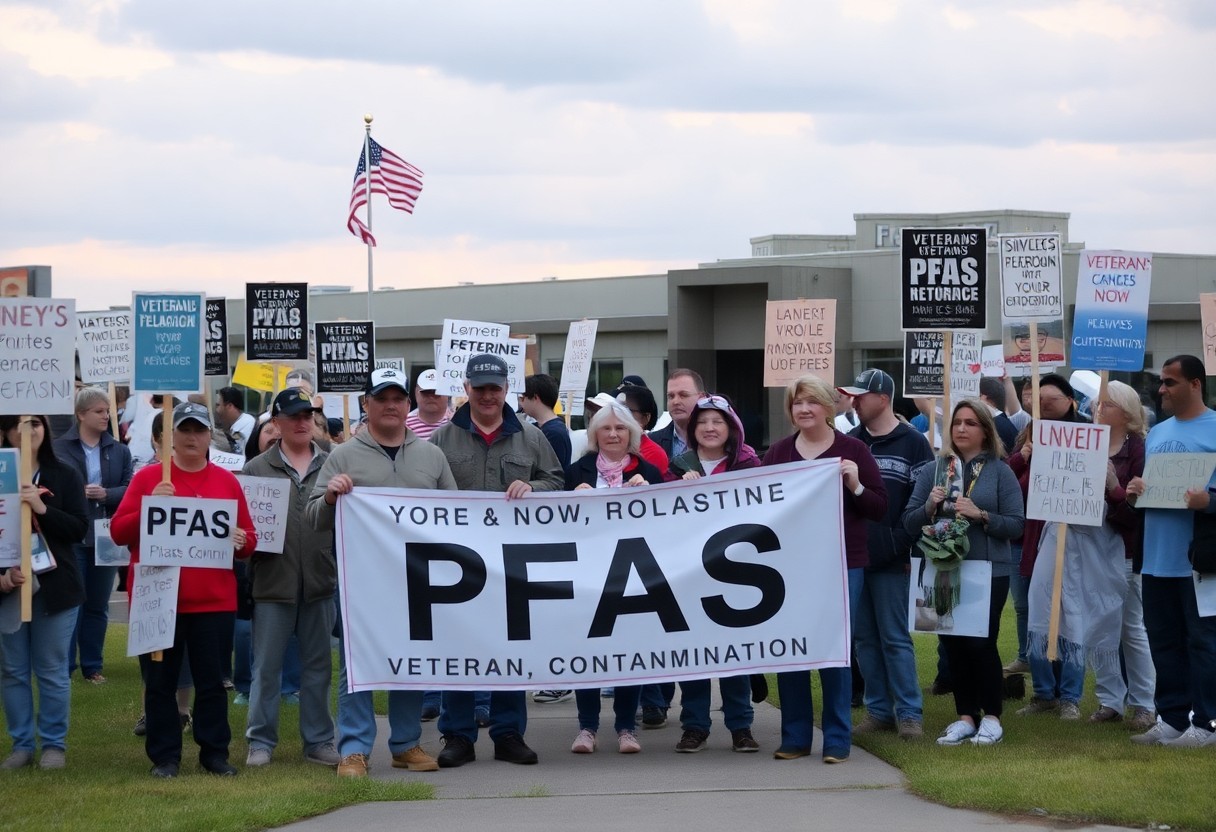Over the past few years, you may have heard whispers about the unsettling drinking water crisis affecting North Carolina, particularly tied to the Chemours Chemical Company. This issue has highlighted serious public health implications regarding water quality in your community. As you navigate the complexities of environmental safety, it’s necessary to understand how these developments can impact your everyday life. To explore deeper into the details, you can explore the full story in this Drinking Water Crisis That North Carolina Ignored article.
Background of the Drinking Water Crisis
The drinking water crisis in North Carolina traces back to the widespread contamination caused by the activities of the Chemours Chemical Company. This situation has raised serious concerns about public health and environmental integrity. As the chemical industry expanded in the region, so did the risks associated with unregulated discharges of pollutants into local waterways. You may not realize it, but the implications of these actions have a direct impact on the water you consume, emphasizing the urgent need for accountability and transparency from corporations operating in your vicinity.
Overview of Contaminants
Water contamination involves several harmful substances, particularly per- and polyfluoroalkyl substances (PFAS), commonly referred to as “forever chemicals.” These chemicals are notable for their persistence in the environment and human body, leading to various health issues, including cancers and hormonal disruptions. For you, understanding the nature of these contaminants is crucial, as they can pose serious risks to both your health and the health of your community.
Historical Context in North Carolina
To comprehend the depth of the drinking water crisis, you must consider the historical context of chemical manufacturing in North Carolina. The state has been a hub for industrial activity, with companies like Chemours playing a significant role in the local economy. However, this industrial growth often came at the expense of environmental oversight. Incidents of chemical spills and lax regulatory enforcement have created a legacy of contamination that continues to affect residents’ access to clean drinking water today.
At this juncture, it’s vital to acknowledge that North Carolina’s regulatory landscape has historically been inadequate to address emerging threats from industrial waste. While state and federal regulations have evolved to include stricter guidelines, the slow response to the crisis has allowed harmful practices to persist over the years. By understanding this context, you can better appreciate the importance of advocating for stronger protections and demanding accountability from corporations like Chemours, ensuring that your water remains safe and clean for all who rely upon it.
Role of Chemours Chemical Company
Chemical Production and Its Impact
It is important to recognize the role of Chemours Chemical Company in the drinking water crisis that has affected countless communities in North Carolina. You may be aware that Chemours produces a range of chemicals, including per- and polyfluoroalkyl substances (PFAS), which have raised significant public health concerns due to their persistence in the environment and human body. The production processes utilized by Chemours have been linked to contamination of groundwater sources, which directly impacts the quality of drinking water supplied to local residents. This chemical runoff poses not only environmental hazards but also long-term health risks to individuals exposed to contaminated water.
Additionally, you might find it alarming that the scale of Chemours’ operations has far surpassed initial projections, leading to increased levels of pollutants entering waterways. These chemicals can impede the natural filtration systems meant to protect your drinking water, creating an ongoing issue for communities that rely on these sources. The legacy of Chemours’ production practices continues to reverberate, affecting both the environment and public health well beyond the immediate vicinity of their facilities.
Legal and Environmental Accountability
Chemical regulations are designed to hold companies accountable for the environmental impact of their operations. You might be surprised to learn that Chemours has faced numerous lawsuits and regulatory actions stemming from allegations of water contamination. These legal battles highlight a broader concern regarding environmental accountability, as local and state governments strive to safeguard public health while navigating the complexities of industrial chemical production. If you follow these developments closely, you may see how pressures from both communities and advocacy groups are pushing for more stringent regulations around chemical safety and environmental protections.
Accountability for companies like Chemours is imperative to ensure that they take responsibility for the long-lasting effects their operations have on drinking water sources. You should be aware that stakeholders, including local residents and activists, are advocating for stricter environmental regulations and greater transparency concerning chemical production practices. As you engage with these issues, it becomes clear that holding corporations accountable is crucial not only for environmental preservation but also for the health and safety of communities impacted by such activities. Moving forward, your awareness and involvement can make a difference in pushing for change and ensuring that such crises do not continue to be overlooked.

Impact on Local Communities
While the Chemours chemical company’s activities have significantly disrupted the drinking water quality, the ramifications extend far beyond mere contamination. Local communities face a myriad of challenges, affecting not only their health but also the very fabric of their daily lives. Many residents have reported reliance on bottled water for their everyday needs, which can be a financial burden that should not be necessary. Furthermore, the emotional distress stemming from uncertainty about the safety of the water supply further exacerbates tensions and fears among community members. This ongoing crisis undermines your sense of security and trust in local resources, creating a shadow of doubt that looms over your access to one of the most imperative human needs—clean water.
Health Risks Associated with Contaminated Water
An alarming array of health risks arises from the consumption of contaminated water, particularly concerning the harmful chemicals linked to the Chemours facility. Studies have suggested significant associations between exposure to these toxins and various chronic health conditions, including certain types of cancers, liver damage, and endocrine disruption. You may find yourself facing a higher risk of serious health issues due to exposure to these hazardous substances, not to mention the psychological implications of worrying about your wellbeing and that of your loved ones. Access to safe drinking water is a fundamental human right, and when this right is compromised, the ripple effects on health and well-being can be severe and enduring.
Economic Consequences
One cannot overlook the economic consequences stemming from this crisis, as the contaminated water has a direct impact on property values and local businesses. With many residents opting to relocate or invest in filtration systems, their financial stability is threatened. Furthermore, local businesses may struggle to attract customers who are wary of the water quality, thereby stifling economic growth and job creation. As you navigate your daily life in the affected areas, the consequences of this crisis can lead to a broader economic downturn that impacts everyone, from homeowners to small business owners.
Local businesses, in particular, are facing harsh realities as customer trust dwindles and health concerns rise. The uncertainty surrounding water quality leads many potential patrons to seek alternatives outside the community, severely affecting sales and overall growth. Additionally, property values in contaminated areas are declining, making it challenging for homeowners to sell or refinance their properties. This creates a cycle of financial strain that leaves you, as a resident, vulnerable and increasingly concerned about the future of your community’s economic health.
Regulatory Responses
State Regulations and Oversight
Beside the immediate concerns about water quality, your understanding of how state regulations have responded to the Chemours chemical spill is fundamental. North Carolina’s regulatory agency initially struggled to keep pace with the rapidly advancing scientific evidence regarding the health risks posed by chemicals such as GenX and other PFAS. This lack of swift action has left many residents questioning the adequacy of state oversight, as rules and monitoring protocols lagged behind what scientists recommended for public safety. You may find it alarming that despite growing evidence linking these chemicals to adverse health effects, state regulations were slow to evolve, leading to a significant gap in protection for your drinking water.
Federal Involvement and Policy Changes
Any federal involvement in the Chemours case has been marked by a series of policy shifts aimed at addressing the broader concerns around PFAS contamination. While the federal government initially took a hands-off approach, the increasing awareness of public health implications has led to renewed calls for stricter regulatory frameworks. You may notice that recent discussions in Washington aim to bolster regulatory actions, such as classifying PFAS as hazardous substances under the Superfund law, which could facilitate clean-up efforts at contaminated sites like those associated with Chemours. This shifting landscape highlights the importance of not only state but also federal accountability in protecting your water supply.
It is vital for you to stay informed about these developments as they unfold. Federal regulations may soon establish maximum contaminant levels for PFAS in drinking water, perhaps even offering a clearer path for remediation in areas heavily impacted by Chemours and similar pollutants. Engaging with community advocacy is vital, as public pressure can influence legislative actions and ensure your concerns about drinking water safety are not overlooked. As regulatory frameworks adapt, it becomes increasingly important for you to advocate for your right to clean water amidst the ongoing fallout from industrial pollution.
Public Awareness and Activism
After years of limited acknowledgment of the drinking water crisis caused by Chemours Chemical Company, the tide began to turn as communities became increasingly aware of the implications of contamination. Grassroots movements emerged, igniting local participation and engagement, demanding action from both government agencies and Chemours itself. You may find that these activists not only raised your awareness but also equipped you with resources and information that highlighted the risks associated with per- and polyfluoroalkyl substances (PFAS). They held community meetings, organized rallies, and used social media effectively to galvanize public support, making it clear that this issue impacted everyone, regardless of proximity to contaminated sites.
Grassroots Movements
One of the most powerful aspects of grassroots movements is their ability to mobilize ordinary citizens. These energized individuals forged connections among impacted communities, emphasizing the importance of collective action. You likely witnessed how local residents banded together, sharing their stories and personal experiences to amplify the urgency of the situation. This camaraderie not only empowered those directly affected but also encouraged sympathetic allies to join their cause, fostering a more informed and united front against the pervasive threat of toxic chemicals in your water supply.
Media Coverage and Its Influence
Public awareness of the Chemours drinking water crisis significantly escalated due to increased media coverage, which played a vital role in shaping perception and driving activism. Journalists began to investigate the extent of contamination and the subsequent health risks, allowing you to gain a fuller understanding of the problem. Reports highlighting the stories of affected families exposed systemic failures and convinced many of the urgency for reform and accountability. With the media shining a spotlight on these issues, it became harder for governmental agencies to ignore the pressing needs of their constituents.
Consequently, the media’s role became instrumental in not just raising awareness but also putting pressure on policymakers to take action. Investigative stories exposed the inadequacy of existing regulations and brought attention to the long-term impacts of PFAS exposure on public health. As you followed the developments in the news, you could see how sustained coverage transformed the conversation around water safety, galvanizing further activism and pushing for legislative change to protect your community and ensure safe drinking water for all.
Solutions and Future Directions
Keep in mind that addressing the drinking water crisis caused by Chemours requires a multifaceted approach. Local communities, environmental advocates, and government officials must partner to implement effective solutions. You can stay informed about community efforts and legislative changes by checking resources such as It’s terrible: Fight for clean water in Cumberland County …, which shed light on local initiatives aimed at restoring clean water access.
Remediation Efforts
Alongside legislative action, remediation efforts are underway to clean up contaminated sites and mitigate the impacts of Chemours’ chemicals. These efforts involve advanced filtration systems, monitoring programs for water quality, and investments in local infrastructure. You may want to advocate for heightened transparency and regular updates from state environmental agencies as they work to implement these remedial measures, ensuring that your community’s water supply is continually tested and safeguarded.
Long-term Strategies for Safe Drinking Water
Strategies aimed at ensuring safe drinking water for the future involve comprehensive policies that prioritize sustainability and safety. You could support initiatives that emphasize preventative measures, such as strict regulations on chemical discharges and increased funding for water testing in communities at risk. Engaging in public forums and expressing your concerns can also amplify the urgency of these long-term strategies.
Hence, a combination of stringent regulatory frameworks, community advocacy, and sustainable practices will be imperative in preventing similar crises in the future. You can contribute to this effort by staying informed and involved, pushing for accountability and transparency in both corporate actions and governmental oversight. Together, you and your community can work towards a solution that guarantees safe drinking water, protecting both people and the environment for years to come.
Summing up
With this in mind, it is vital for you to acknowledge the severity of the drinking water crisis associated with the Chemours Chemical Company in North Carolina. The contamination of water sources by toxic chemicals has far-reaching implications for your health and the well-being of your community. Understanding the environmental and health risks linked to this issue allows you to make informed decisions and advocate for stronger regulations and better monitoring of water quality in your area. Awareness can empower you to engage with local officials and demand accountability from corporations like Chemours, ensuring your right to clean and safe drinking water is upheld.
Your role in addressing this crisis cannot be understated. By educating yourself and others about the challenges posed by chemical pollution, you contribute to a larger movement for environmental justice. You have the opportunity to push for legislative changes that prioritize public health over corporate interests, fostering a safer future for all residents in North Carolina. As you become more informed, your voice can resonate in demanding sustainable practices that safeguard not only your water supply but also the environment for generations to come.



















